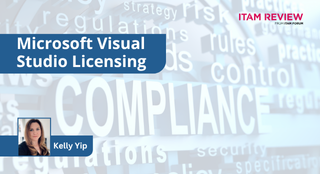Microsoft Dynamics 365, PowerApps, and Flow: All change with licensing
At Inspire, their annual partner conference, Microsoft announced upcoming licensing changes for 3 products:
- Dynamics 365
- PowerApps
- Flow
The changes discussed below will take effect October 1, 2019 and this article is based on information released at Microsoft Inspire and via subsequent Microsoft blog posts.
As with pretty much all licensing changes from all vendors, there are both positive and negative aspects of the new models and some customers will be quite happy, others not so much. Ease will increase for most, but so too might costs.

Dynamics 365
Microsoft’s CRM offering is currently sold primarily via “Plans”, bundles of applications and features. However, Microsoft have noted these can cause organisations to pay for services they’re not using – which makes it harder to sell and leads to requests for discounting etc.
For example, the “Finance and Operations” application is only available as part of the “Unified Operations” plan – it can’t be bought separately.
Changes
A la carte licensing
From October 1, all “plans” will be removed from the Microsoft price lists and replaced with a more flexible “Base license + Attach” model licensing style – allowing organisations to choose the applications they need based on user requirements. This includes the current “Finance and Operations” application being split into 2 separate, standalone apps: “Supply Chain Management” and “Finance”.
Applications will still be divided between “Customer Engagement” and “Unified Operations” and will have “base” pricing and significantly cheaper “attach” pricing; where “base” pricing is different between 2 applications – the more expensive must be selected as the base license.
For example, if you wanted to license 2 applications, one from each stream:

The Unified Operations application must be the base license at $180, and then the Customer Engagement app would be $20 to attach on top.
Pricing
A single Customer Engagement app, at $95, represents a $20 dollar saving when compared to the current plan pricing, while Unified Operations is a $10 reduction. This table shows the price comparison between the 2 licensing models:

For those organisations using multiple apps, it will become more expensive – although the expectation is that this will rarely occur and will be balanced out by savings on single app users.
Current Customers
Current customers won’t see any change until their next renewal, at which stage they’ll transition to the new licensing model. It’s reported here that there will be a 50% discount on attach SKUs in CSP for Microsoft FY20, the current financial year that ends in June 2020.
Dynamics 365 licensing changes: Conclusion
Microsoft have realised that very few customers are using all the elements of the plans they’re purchasing, and this often leads to demands for discounts. Microsoft are trying to change the conversation and reduce the need for discounts to be so prevalent. It also looks like it will perhaps lower the barrier to entry if people aren’t buying all these extra things. Although the pricing isn’t particularly different for 1 “base” app under the upcoming model vs a “Plan” in the current model, it might make a difference psychologically. If the license does a single job, I’d imagine a single department head will find it easier to make the purchase – without worrying about overlap with other products/business units etc.
What does it mean for the future? Yes, the majority of customers now may only be using 1 app…but surely Microsoft anticipate their customers adding additional Dynamics 365 functionality over time? That means that Dynamics 365 will be a more expensive proposition in the future than it is currently.
Over the last couple of years, Microsoft seem to be developing a strategy of announcing something quite controversial and then rolling it back based on partner/customer feedback – will we see that happen again with these Dynamics 365 licensing changes? The re-bundling of certain apps and reducing the base license price of certain apps (perhaps increasing the attach price for others simultaneously) both seem quite likely over the course of FY20.
Will this make licensing and procuring Dynamics 365 too complicated for organisations? Perhaps. Will it make Dynamics 365 cheaper? Maybe.
Will it make license management for Dynamics 365 more complicated? Definitely.
But wait, there’s more…
PowerApps
There are a few changes coming, aimed at making PowerApps easier to get started with, and to extend its functionality.
Per App
The PowerApps “per app” plan gives full PowerApps functionality but can be used just for a single app. Pricing will be around $10 per app per month, with a minimum purchase of 30 licenses.
Per User
The “per user” plan combines the current Plan 1 & Plan 2 offering, giving full functionality for an unlimited number of apps. Pricing will be around $40 per user per month, with no minimum.
PowerApps Portals
Used to allow you to “build low-code, responsive websites”, PowerApps Portals are licensed in 3 ways:

*PowerApps per app/per user, and certain Dynamics 365 USLs
Flow
Microsoft’s corporate answer to IFTTT (IF This Then That), Microsoft Flow will also see some licensing changes, in a similar vein to PowerApps.
Per Business Process
This will allow unlimited users (so will not be licensed via USL (User Subscription License)) for 1 business process with up to 5 active workflows and will be $500 per month.
Per User
This will combine the current Plan 1 & Plan 2 offerings into a single SKU, giving a user the ability to create and run an unlimited number of flows with a daily API request limit of 2,000. Pricing will be $15 per user per month with a minimum requirement of 20 licenses.
Add-ons
There are 2 add-ons being made available for both PowerApps and Flow:
AI Builder capacity add-on
This tenant-wide license will give 1,000,000 service credits and cost $500 per month.
PowerApps & Flow Capacity add-on
This increases API request limits and gives capacity dedicated per user/app/business process. Each “unit” gives 10,000 daily API requests for $50 per month.
PowerApps & Flow Conclusion
Consolidating the Plan 1 & Plan 2 variants into a single license helps make it a little easier to purchase and ensures all customers have the full functionality of Flow available.
PowerApps Portals, while offering a straightforward way for organisations to expand the scope of their creations, looks like it could be expensive; $2 per login is high and 3 – 5 logins per day seems an extraordinarily low number – meaning organisations will find themselves paying out ever increasing sums for authenticated external user logins. Additionally, we all know from experience that any time something can be made externally accessible but must be licensed to do so – you have a non-compliance risk on your hands!
Further Reading
Microsoft announcement – https://cloudblogs.microsoft.com/dynamics365/bdm/2019/07/25/accelerating-innovation-with-dynamics-365-and-the-power-platform/
Microsoft PowerApps blog – https://powerapps.microsoft.com/en-us/blog/new-licensing-options-for-powerapps-and-flow/
PowerApps Portals – https://powerapps.microsoft.com/en-us/blog/introducing-powerapps-portals-powerful-low-code-websites-for-external-users/
Can’t find what you’re looking for?
More from ITAM News & Analysis
-
Shaping the Future of ITAM – We Want Your Input
The ITAM Forum is currently running a survey to capture hot topics and pressing challenges facing the ITAM profession. The insights gathered will guide our editorial focus and community content for the year ahead. Early responses ... -
Tesco Sues Broadcom and Computacenter for £100M
What’s going on? UK retailer Tesco says it bought VMware perpetual licences in 2021 with support and upgrade rights running to 2026, plus an option to extend. After Broadcom acquired VMware, Broadcom stopped selling support for ... -
83% of IT Managers Believe their Asset Data is Highly Accurate - Only 35% of the Business Agrees
New and interesting research from WanAware hits at the nub of the disconnect many IT Asset Managers might feel about the value they deliver. The ‘Closing the ITAM Confidence Gap. 2025 Survey Insights for IT Leaders’ ...
Podcast
ITAM training
Similar Posts
-
Tesco Sues Broadcom and Computacenter for £100M
What’s going on? UK retailer Tesco says it bought VMware perpetual licences in 2021 with support and upgrade rights running to 2026, plus an option to extend. After Broadcom acquired VMware, Broadcom stopped selling support for ... -
Microsoft Q4: Cloud and AI Results Drive Record Revenue
On 30th July 2025, Microsoft released its much-anticipated FY25 Q4 earnings report. The results follow a surprisingly strong Q3, which exceeded the expectations of some of the most optimistic investors. The latest Q4 results continue with ... -
Microsoft Visual Studio Licensing Guide: Reduce Risks
(This article was reviewed and updated on 3 July 2025) Visual Studio Licensing Visual Studio subscriptions are licensed Per User with each licensed user able to. “install and use the software on any number of device”. ... -
Broadcom vs Siemens AG - A Brewing Storm
The ongoing legal battle between VMware (under Broadcom ownership) and Siemens is yet another example of why ITAM goes far beyond license compliance and SAM. What might, at first glance, appear to be a licensing dispute, ...




